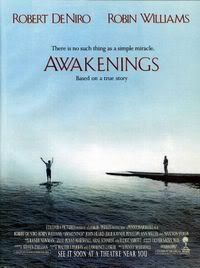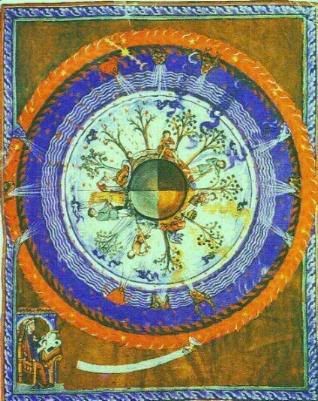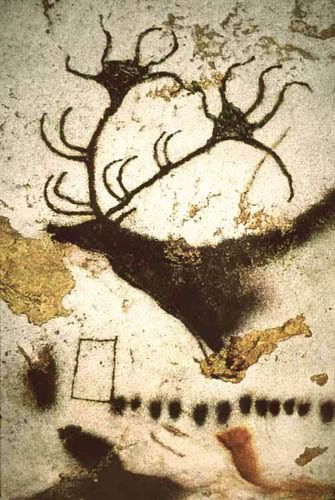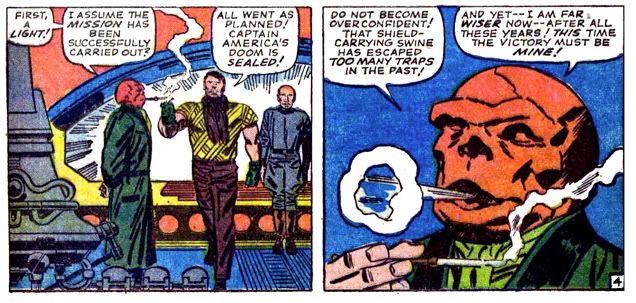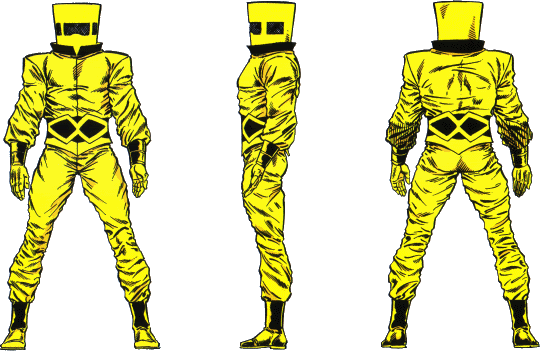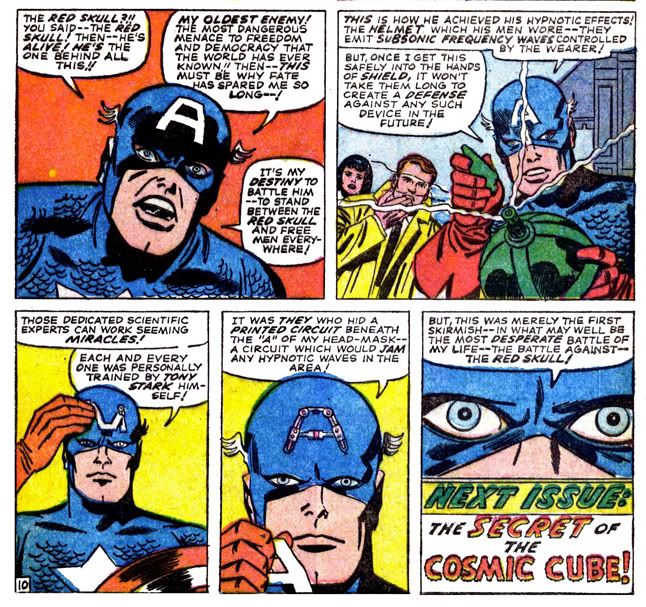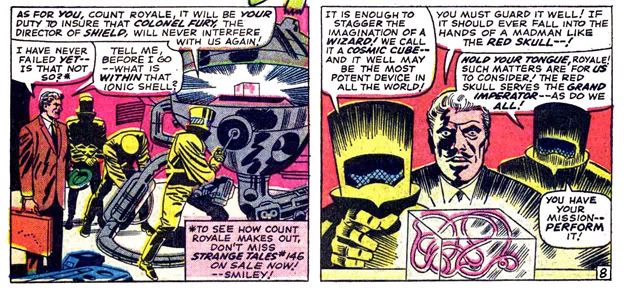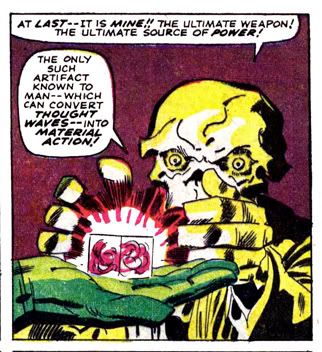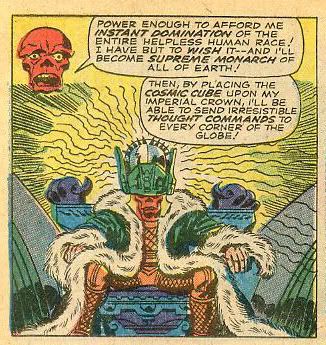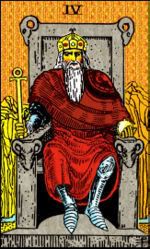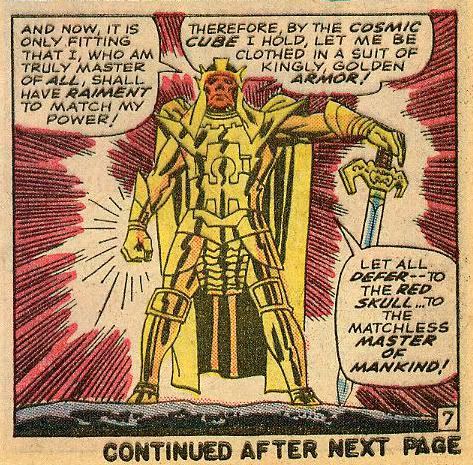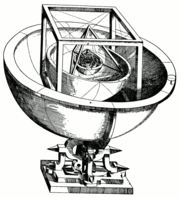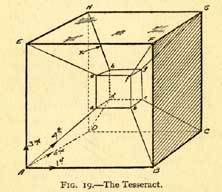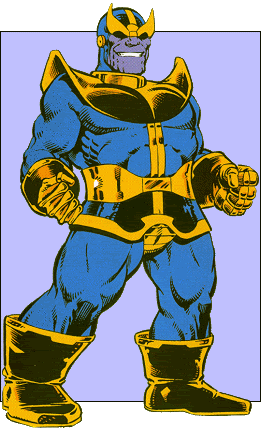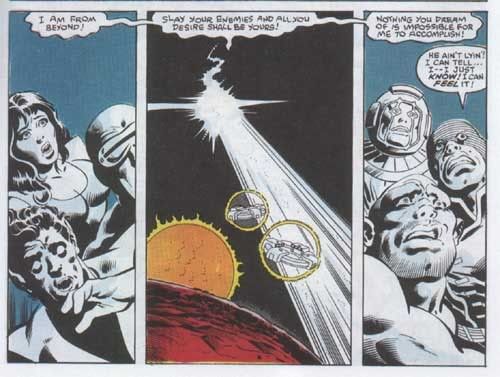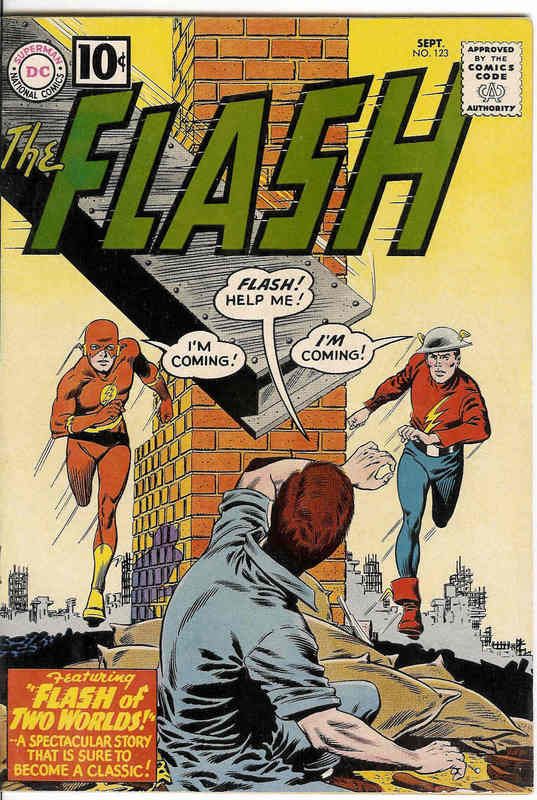
Art by Carmine Infantino
The Flash is a hermetic character, an association that is obvious I'm sure we will all agree. The costuming alone is testament to this, and the quality of super speed as well. The Flash is indeed faster then the speed of light, thus able to defy the laws of physics, to move through physical matter and travel astronomical distances in less then a blink of an eye. And with the use of a device called the Cosmic Treadmill the Flash could even move freely through the stream of time and into parallel realities.
There has been more then one individual to adopt the identity of the Flash, however, in every case we can see strong alchemical elements in the origin of their abilities. The original Flash, Jay Garrick, created by writer Gardner Fox and artist Harry Lampert, acquired his super-speed due to the inhalation of something called hard water vapors (hard water not meaning water heavy with mineral content). The second Flash, Barry Allen, created again by Gardner Fox this time with artist Carmine Infantino, became the Flash after he was simultaneously bathed in multiple chemicals and struck by lightning. The third Flash, Wally West, gained his powers in an accident identical to Barry Allen's. It is worth mentioning that the evocative symbol of the lightning bolt can be shown to correspond to a zig-zagging pattern down the Kabbalistic Tree of Life.

Illumination from above comes like lightning. Another metaphor used to describe this path is that of the serpent.
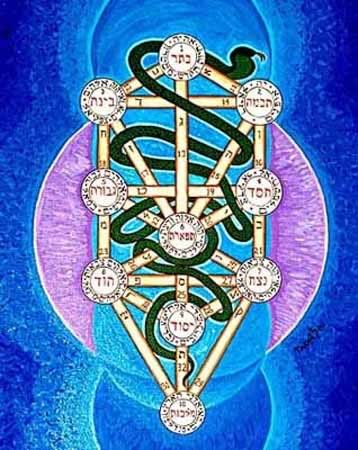
As we all know Mercury/Hermes is symbolized by the winged shaft entwined with serpents known as the caduceus. The Tree of Life is one of many levels of meaning communicated by this symbol.
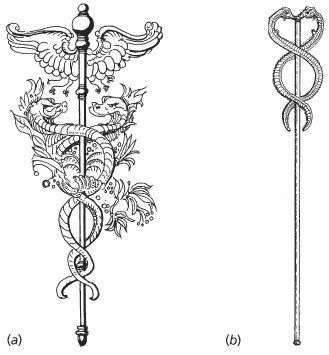
Hermes/Mercury is a herald, a messenger of the gods. He is also a psychopomp, a figure whose role is the shepherding of the souls of the dead to the afterlife. It is interesting to note that the so-called Silver Age of comic books is largely held to have begun with the first appearance of the Barry Allen Flash in DC Comics "Showcase" #4 , published October, 1956. The Flash is the herald of the Silver Age. These artificial determinations of comic book Golden Age, Silver Age, etc. are interesting as they conform to the quadripartite division of the Four Great Ages as described by Ovid and others.
In the mid 80's DC Comics made the head-scratching decision to modernize their "continuity" by removing all of the wonderful parallel Earths they had created over decades of the highest level of fantasy storytelling (head-scratching to me, most fanboys seem to think it makes perfect sense). The 12-issue series "Crisis On Infinite Earths" is a beautiful work of art with a highly destructive intent. Comic Book Ages are relatively transient things it seems. The Bronze Age is said to have begun around the early seventies (I say with the introduction of the new X-Men). In issue #8 of Crisis Barry Allen sacrifices his life for the sake of Universe. Crisis marks the end point of the Bronze Age (undoubtedly more to come on Crisis in future blogs).
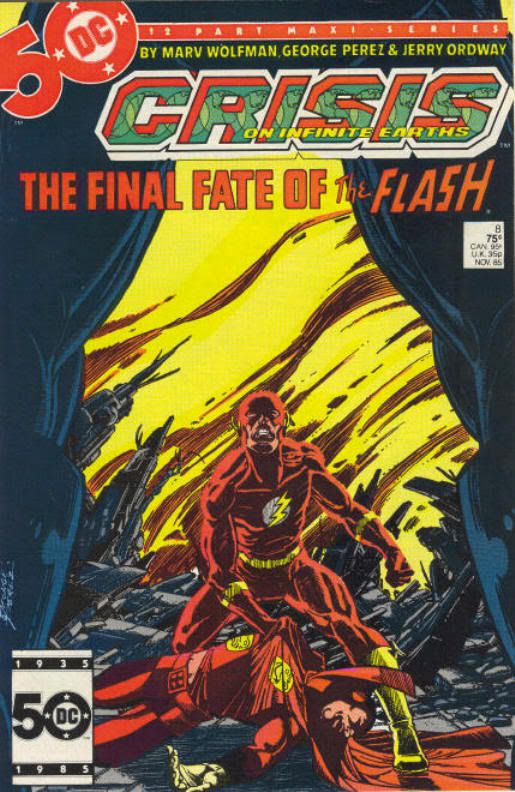
art by George Perez and Jerry Ordway
I present this material not to prove that Flash is an analogue of Hermes, that is self-evident, but to present just a slice of the levels of meaning and association one can derive from this seemingly simple cartoon character. Hermes is of course also Mercury, and Thoth/Tehuti, and Anubis, and Odin, and many other figures from the Ancient Mysteries as well.
You might be familiar with the periodic astrological state known as Mercury Retrograde. From the vantage point of the Earth, all the planets undergo periods of retrograde motion, an apparent backward movement along its path around the sky. For the most part the apparent "normal" direction for most objects to move in our solar system is West to East, or counterclockwise if viewed from the North Pole. A retrograde movement is then the apparent movement from East to West. Another term associated with this in astrological circles is "Mercury's Shadow", which extends around the period of retrograde motion by three weeks on either side. Commonly the periods of Mercury retrograde are held to be times when many things go awry. This is a vast simplification. Mercury retrograde is said to enhance the aspects of the zodiac sign it inhabits at the time of the initial backward motion.
Manly P. Hall's concepts on astrology and the zodiac constellations are well worth reading, especially if you are seeking a clearer understanding of the Precession of the Equinox:
Manly P. Hall - The Zodiac and its Signs
Make what you will of astrology. I rather find it a fascinating example of allegorical symbolism, making it a human device, a tool, and all tools are made to be used. It's how you use the tool that is important. Guns don't kill and all that. I personally agree with Hall's contention that the phenomena of astrology is based upon the collected observations of millions of years of human civilization. Many would disagree with ire.
Even if just taken as a metaphor, there is an understandable fear in that which is different, especially so if that difference lies in some form of advancement that is going to result in a thriving status for the "mutant". This is a subject for a great deal of fantasy story telling, obvious examples being the "X-Men" comic books, movies and cartoons, the Harry Potter series of novels and movies, and the NBC television program "Heroes", just to name a few. Even Maurice Sendak's "Where The Wild Things Are."
The common denominator of these "children's" stories is the need for some form of institution to locate and educate the rare and special class in order to ensure their abilities are a benefit to the world and not a detriment. It is almost always the case that these educational institutions by necessity must exist covertly or underground. This common notion can be easily read as a metaphor for the Rosicrucian concept of an Invisible College. Wikipedia's entry does not even begin to explore this ancient metaphor.
We can see this idea being relayed about popular culture, especially so the last few years. If you've read Hall's chapter on the zodiac, you'll have noticed how he mentions that the positive characteristics of a zodiac sign is in actuality a metaphor for its position in the sky in a geocentric model. I believe that this concept could be furthered to encompass all astronomical bodies, and that the allegorical legends describing their various conjunctures and separations likewise. By this I mean that a negative, malignant, or evil figure in an astronomically allegorical myth is a designation of direction, movement and position. We can not make gross judgments on the symbolic connotations of a figure based on their apparent dispositions. This is the essence of determining the esoteric from the exoteric, the Greater from the Lesser.
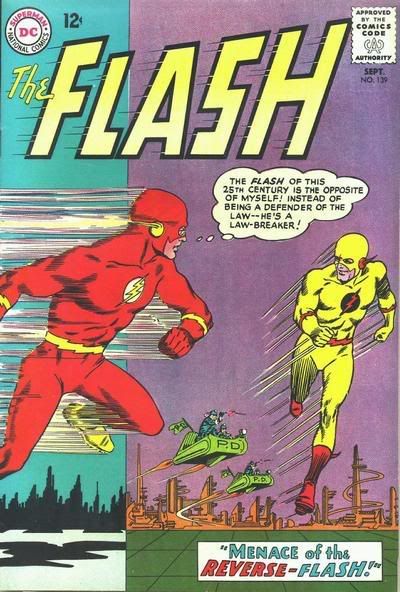
art by Carmine Infantino
Which brings me to The Reverse Flash, aka Professor Zoom. The Flash and the Reverse Flash posses the exact same power. Their opposition comes from a difference in their morality. The Flash is a good guy, the Reverse Flash is a bad guy. Note that even the costume is exactly the same, only opposite in color placement, brining color duality into the mix. The name says it all. This is the Flash moving in the opposite direction. This is Mercury Retrograde.
The name Zoom comes up again as the character played by Tim Allen in the Disney movie "Zoom: Academy For Superheroes". This seems nearly identical to the Kurt Russel film "Sky High", also by Disney. In "Zoom" Tim Allen plays former super hero Captain Zoom. But note that when Captain Zoom becomes an instructor at an Academy he is automatically Professor Zoom. Captain Zoom's power naturally enough is super speed.
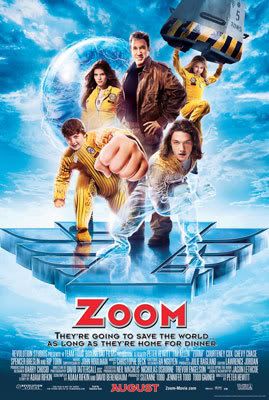
I find it interesting that three of the four students in Zoom display the powers of characters from the Pixar/Disney film "The Incredibles", super-strength, invisibility, and a malleable form.
This same combination of powers is seen in Jack Kirby's "Fantastic Four", where we can easily see the elemental symbolism underlying the combination. The Thing (Earth) is super strong. The Invisible Girl (Air) can turn invisible. Mr. Fantastic (Water) has a malleable form.

art by Jack Kirby
In both cases it is Fire (the Human Torch) that is removed from the equation. The Human Torch was also absent in 1978 cartoon of the Fantastic Four, Saturday mornings on NBC. He was replaced by the insipid H.E.R.B.I.E. the robot. They say this was due to copyright issues on the Torch. As a kid I thought it was because they were worried children would ignite themselves in emulation. Regardless of surface reasoning it is symbolically important that the Torch is absent. Fire and the Torch are symbolic of enlightenment in countless presentations, Prometheus and Ceres being ready examples.
The fourth super child in "Zoom" is a telekinetic, the power of Jean "Phoenix" Grey of the X-Men and Gabriel "Sylar" Gray on "Heroes". Courtney Cox Arquette costars on "Zoom". She also appeared in the short-lived 1985 NBC series "Misfits Of Science". Her character was a telekinetic. The fourth member of the Incredibles has the power of super speed. Hermes.

The film "Zoom" is based upon an obscure comic book by artist Jason Lethcoe, entitled "Zoom's Academy for the Super Gifted".

The protagonist of the story is an adolescent girl named Summer Jones. The telepathic Professor Charles Xavier, in the Invisible College business since September of 1963, taught his X-Men for years at Professor Xavier's School for Gifted Youngsters. Created by Jack Kirby, the original X-Men include the esoterically resonant Iceman, future blue people the Angel and the Beast, the telekinetic Jean Grey originally called Marvel Girl and Cyclops, her lover, real name Scott Summers.
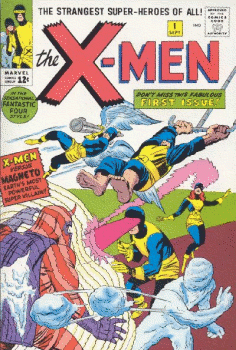
art by Jack Kirby
Not long after the airing of the Fantastic Four cartoon of the late seventies, NBC Saturday morning brought us "Spider-Man and His Amazing Friends", which teamed Steve Ditko's web-spinner with two students from Xavier's School, the Iceman and the made for the cartoon Firestar, a female version of the Human Torch. Her real name was Angelica Jones.
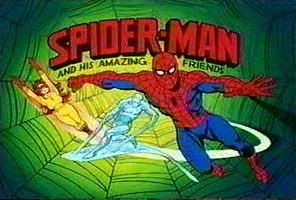
"Eat your heart out, OJ"!
